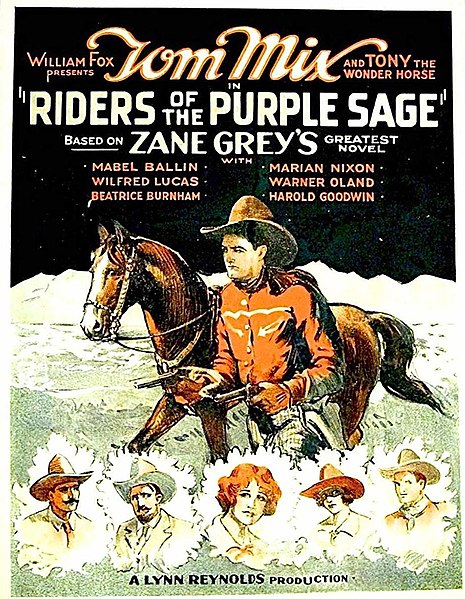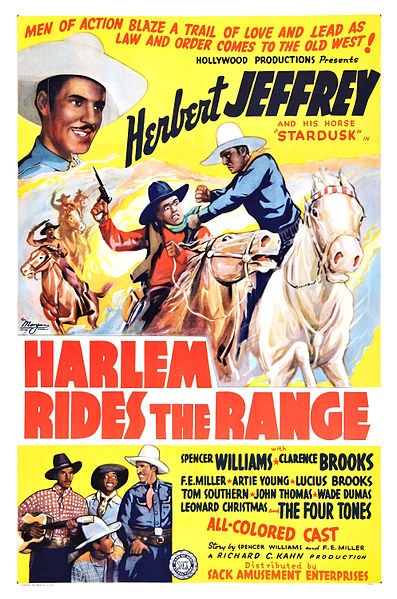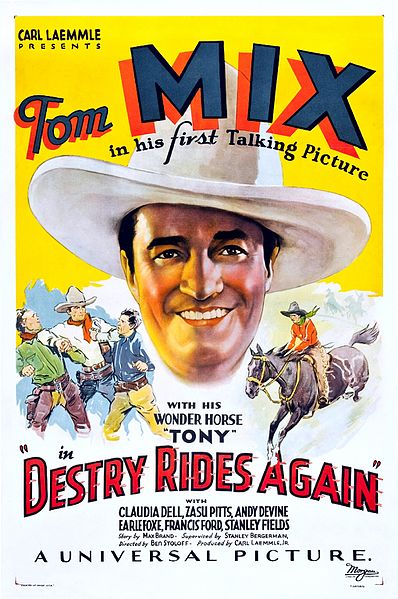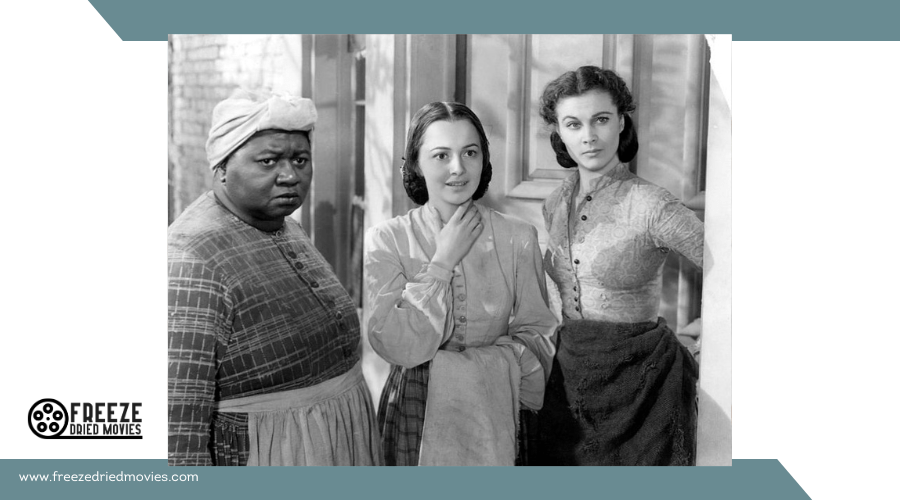The Best 1930s Westerns: Cowboys, Outlaws, and Classic Tales

Exploring the best Westerns of the 1930s introduces you to a realm where cowboys and outlaws redefined the American frontier. Films like *Stagecoach* and *Destry Rides Again* didn't just entertain; they introduced complex characters and moral dilemmas reflecting the societal struggles of the time. Early roles by John Wayne and iconic characters like Zorro helped transform Western archetypes into enduring legends. These films are captivating due to their fusion of traditional narratives with innovative storytelling. Discover how these classic tales shaped the Western genre and left an indelible legacy.
Key Traits of 1930s Westerns
The 1930s Westerns often featured simple plots and modest production values, yet they captivated audiences with their straightforward tales of good versus evil. These films primarily targeted juvenile audiences and families, presenting engaging themes that highlighted the heroic qualities of protagonists and the clear-cut nature of antagonists. Many of these westerns ran under an hour, making them ideal for double-feature screenings.
Early in the decade, adaptations of Zane Grey's romantic stories were prominent, showcasing the genre's richness and appeal. These films drew viewers into a world where rugged landscapes met heartfelt narratives. Notable studios like Universal and MGM produced a mix of serious and entertaining films, reflecting evolving themes and cinematic techniques.
The best westerns of this era balanced action with moral lessons, ensuring a memorable viewing experience. Despite their simplicity, these films laid the groundwork for more complex iconic films like *Stagecoach*, which would emerge later. The 1930s Westerns, with their clear narratives and character archetypes, are celebrated as foundational pieces of American cinema, setting the stage for future masterpieces.
Iconic Films of the Decade
As you explore the iconic films of the 1930s, you'll discover that directors like John Ford and Cecil B. DeMille significantly impacted the Western genre. Notable performances by stars such as John Wayne in "Stagecoach" and Marlene Dietrich in "Destry Rides Again" added depth to their characters. Influential plots in films like "Jesse James" and "The Plainsman" showcased the era's storytelling prowess. These movies not only entertained but also shaped the narrative and themes of the American West.
Key Films and Directors
Some of the most iconic films of the 1930s Western genre include "Stagecoach" (1939) and "Destry Rides Again" (1939), both of which pushed the boundaries of storytelling and character development. Directed by John Ford, "Stagecoach" transformed the Western genre with its complex characters and innovative storytelling techniques. It's no surprise that it's often cited as one of the most iconic films of the decade. "Destry Rides Again," starring Marlene Dietrich, showcased a blend of comedy and action, reflecting the evolving themes of the genre.
Another standout is "Cimarron" (1931), directed by Wesley Ruggles, which won the Academy Award for Best Picture. This film illustrated the genre's engagement with historical narratives and frontier life. These films were not just entertaining but also groundbreaking in their thematic depth and craftsmanship.
Key elements that defined this period include:
- John Ford's direction: His work, especially in "Stagecoach," set new standards.
- Academy Award recognition: "Cimarron" brought prestige to the genre.
- Blend of comedy and action: Seen in "Destry Rides Again."
- Major studio involvement: Universal and MGM's productions helped shape the Western's popularity.
These films and directors laid the groundwork for the Western genre's lasting legacy.
Memorable Performances Highlighted
The 1930s Westerns didn't just redefine a genre; they showcased unforgettable performances that left a lasting impact on cinema. John Ford's "Stagecoach" (1939) transformed the Western, featuring standout performances from an ensemble cast, including Claire Trevor and John Wayne. Wayne's role in "Stagecoach" marked a significant improvement over his earlier, less refined performance in "Texas Terror" (1935), demonstrating his growth and versatility within the genre.
Marlene Dietrich's portrayal in "Destry Rides Again" (1939) also stands out. Her dynamic performance highlights the evolving role of women in Westerns and adds depth and complexity, making it one of the decade's most memorable.
George O'Brien became a notable figure in early 1930s Westerns, particularly with his role in "Riders of the Purple Sage" (1931). His performances in adaptations of Zane Grey's romantic tales captured the spirit of the Wild West and solidified his place in Western cinema.

Lastly, Gary Cooper's role in "The Plainsman" (1936) showcased a blend of action and drama, emphasizing iconic Western characters and historical narratives. These memorable performances helped shape the Western genre into what it is today, creating timeless classics that are still celebrated.
Influential Plot Elements
Iconic films of the 1930s Western genre revolutionized storytelling by introducing groundbreaking plot elements that captivated audiences. "Stagecoach" (1939) set a new standard with its intricate character dynamics and moral dilemmas, prompting viewers to reconsider the nature of heroism and justice. "Destry Rides Again" (1939) skillfully blended humor and action, with Marlene Dietrich's performance adding a unique depth and appeal.
Western movies like "Cimarron" (1931) expanded the genre's horizons by addressing frontier life and the evolution of American society, earning the Academy Award for Best Picture. "Jesse James" (1939) explored the life of the legendary outlaw, intertwining historical facts with romanticized storytelling, setting a benchmark for future Westerns. "The Plainsman" (1936) brought iconic figures like Wild Bill Hickok and Buffalo Bill to life, blending historical narratives with action and drama, enriching the mythology of the Old West.
These influential plot elements include:
- Complex Character Dynamics - Characters in "Stagecoach" challenged traditional roles and moralities.
- Blending Genres - "Destry Rides Again" mixed humor with action.
- Historical Integration - "The Plainsman" and "Jesse James" used real historical figures and events.
- Societal Themes - "Cimarron" tackled broader societal changes and frontier life.
These elements continue to shape the Western genre today, solidifying the 1930s as a crucial decade for Western movies.
John Wayne's Early Roles
John Wayne's early roles in the 1930s were pivotal in shaping his screen persona and reputation. In films like *Texas Terror* (1935), Wayne often portrayed the archetypal rugged hero, a character that would become synonymous with his name. Although he frequently appeared as a sidekick or secondary character during this decade, these roles allowed him to build his reputation and set the stage for his future as a leading man.
His collaboration with director Raoul Walsh in *The Big Trail* (1930) was a significant moment, marking one of Wayne's initial leading roles. The film showcased his potential and hinted at the stardom to come. Despite some critics noting his wooden acting style, this characteristic ultimately contributed to his iconic status in the Western genre.

The 1930s were a formative period for John Wayne, during which he solidified his image as the quintessential cowboy. His performances in these early roles laid the groundwork for his later successes, cementing his place as an enduring legend in Western cinema.
Unconventional Western Double Features
Unconventional Western double features in the 1930s broke new ground by introducing diverse narratives and unique casts. Films like "The Terror of Tiny Town" (1938) with its all-midget cast and "Harlem Rides the Range" (1939) featuring an all-Black ensemble shattered traditional genre molds. They combined comedy and musical elements, appealing to broader audiences and offering a fresh take on Western themes.

The use of double features allowed studios to experiment with less conventional storytelling and character portrayals, expanding audience expectations of the genre. These movies often had shorter runtimes, catering perfectly to family and children's entertainment needs. Here's a snapshot of what made these films stand out:
- "The Terror of Tiny Town" (1938): This film used an all-midget cast to create a satirical take on classic westerns, blending humor and engaging narratives.
- "Harlem Rides the Range" (1939): Showcased an all-Black ensemble, offering a unique perspective and diversifying the Western genre.
- Comedy and Musical Elements: Both films incorporated these elements, making them appealing to a wider audience.
- Experimental Storytelling: The double-feature format allowed for versatile and groundbreaking storytelling, pushing the boundaries of traditional Westerns.
These unconventional Western double features redefined the genre in the 1930s.
Influence of Zorro and Fuzzy
While unconventional Western double features were breaking new ground, iconic characters like Zorro and Fuzzy significantly influenced the genre. Created by Johnston McCulley in 1919, Zorro set the stage for heroic outlaws in later Western films. His dual identity as a masked vigilante combined swashbuckling action with social justice, resonating deeply with audiences. This blend of excitement and moral complexity became a template for characters portrayed by actors like John Wayne and Tom Mix in the 1930s.
Conversely, Fuzzy, often portrayed by Al St. John, brought a different flavor to Westerns. As a comic relief sidekick, Fuzzy's humor and distinct personality contrasted sharply with the traditional rugged hero archetype. His presence in films catered to family audiences, reflecting the trend towards more lighthearted narratives. This broadened the appeal of Westerns, making them accessible to a wider audience beyond just action and drama enthusiasts.
Together, Zorro and Fuzzy exemplified the importance of character archetypes in Westerns. They influenced storytelling techniques and paved the way for future iconic figures in American cinema, ensuring the genre's enduring legacy.
Evolution Into 1940S Westerns
The 1940s marked a significant evolution in Western movies, building on the quality revival sparked by 1939's *Stagecoach*. This period saw a transformation in the genre as filmmakers began to explore more complex narratives and nuanced characters. No longer confined to the simplistic plots of the 1930s, Westerns evolved to encompass deeper themes and a richer exploration of the human condition.
Key changes during this phase included:
- Innovative Cinematic Techniques: Directors like John Ford and Howard Hawks pushed the boundaries of the genre, employing advanced filming techniques to create more engaging and visually stunning Westerns.
- Complex Narratives: Westerns of the 1940s often featured intricate storylines and multi-dimensional characters, moving away from the black-and-white morality tales of earlier decades.
- Social Issues: These films began to tackle significant social issues such as justice, equality, and the American Dream, thereby elevating the genre's status in American cinema.
- Legacy of the 1930s: While the influence of 1930s Westerns persisted, filmmakers built upon these foundations to craft stories that resonated with a broader audience.
This evolution showcased the Western genre's versatility and enduring appeal, setting the stage for its continued success in the decades to come.
Cultural Impact of Westerns
Building on the advancements of the 1940s, it's vital to recognize the deep cultural impact Westerns had, especially those from the 1930s. Westerns of this period played an important role in shaping American identity and nostalgia, reflecting a romanticized view of the Old West and its pioneering spirit. Films like "Stagecoach" (1939) transformed the genre, laying the groundwork for character-driven narratives and complex storytelling that would influence future films.
These films established iconic characters and archetypes—such as the rugged hero and the lawless outlaw—that became staples in the cultural narrative surrounding the American frontier. These characters didn't just entertain; they embodied themes of morality, justice, and heroism, often serving as allegories for contemporary social issues during the Great Depression.
The genre's popularity led to numerous adaptations of Zane Grey's romantic novels, enriching the diversity of Western storytelling in American cinema. By exploring these classic tales, one can appreciate how 1930s Westerns addressed complex themes, making them timeless pieces of American culture.
Lasting Legacy in Cinema
The lasting legacy of 1930s Westerns in cinema is undeniable, as they played a foundational role in shaping the genre. These films established key themes and character archetypes that have influenced countless stories about cowboys and outlaws ever since. Iconic films like "Stagecoach" (1939) set the gold standard with their groundbreaking storytelling and dynamic characters, transforming the genre.
The enduring nostalgic appeal of these Westerns keeps them alive in film retrospectives and academic discussions. Their impact can be seen in several ways:
- Foundational Themes: Concepts like the struggle between good and evil and the rugged individualism of the cowboy became genre staples.
- Character Archetypes: The 1930s solidified the stoic hero, the outlaw with a heart of gold, and the frontier woman.
- Industry Recovery: Westerns played a significant role in drawing audiences back to theaters during the Great Depression, showcasing their box office power.
- Influence on Later Movements: Spaghetti Westerns and modern reinterpretations frequently draw on the stylistic and thematic elements created at this time.
These aspects collectively contribute to the lasting legacy of 1930s Westerns in cinema.
Westerns' Global Influence
You might not realize it, but Western films have had a significant impact far beyond American borders. Westerns have inspired filmmakers globally, leading to international variations that bring unique cultural flavors to the genre. In Italy, the Spaghetti Western emerged, with directors like Sergio Leone drawing on the gritty tales of American cowboys to create iconic films celebrated worldwide.
Japan's cinematic genius Akira Kurosawa took Western narratives and infused them with samurai culture, as seen in "Yojimbo" (1961). This film, in turn, influenced Leone's work, showcasing a fascinating exchange of ideas between East and West. Australia contributed its take with "The Proposition" (2005), blending local landscapes and themes with the classic Western's moral dilemmas and quests for justice.
Westerns' influence isn't limited to white cowboys; the cultural significance of Black cowboys has also been honored. Films like "Black Rodeo" (1972) celebrate African American contributions, challenging traditional narratives. Further afield, Korean cinema offered "The Good, the Bad, the Weird" (2008), a playful homage incorporating Korean cultural elements.
These international variations of Westerns demonstrate the genre's global reach and lasting appeal.
Memorable Characters and Themes
In 1930s westerns, iconic heroes like John Wayne and Zorro epitomize the rugged cowboy archetype. These films are rich with classic conflicts and timeless moral dilemmas, where the pursuit of justice often leads to dramatic showdowns. The period's characters and themes continue to resonate, showcasing bravery, individualism, and the fight against lawlessness.
Iconic Western Heroes
Many iconic Western heroes of the 1930s embodied rugged individualism and moral clarity, capturing audiences' imagination with their larger-than-life personas. John Wayne epitomized these qualities in *Texas Terror* (1935), where his portrayal of a determined lawman showcased the classic conflict between good and evil. These characters often faced off against villains representing lawlessness, emphasizing themes of order and chaos.
To paint a clearer picture, consider the following:
- John Wayne: In *Texas Terror*, Wayne's character embodied the rugged individualism and moral clarity that became his trademark.
- Diverse Female Roles: Films like *Stagecoach* (1939) featured female characters ranging from damsels in distress to strong pioneers, reflecting evolving gender roles.
- Redemption Themes: *Destry Rides Again* (1939) highlighted themes of redemption, with its protagonist balancing charm and moral complexity.
- Character Archetypes: The 1930s set the stage for iconic archetypes like the stoic lawman, the charming outlaw, and the resilient frontier woman.
These heroes weren't just fighting physical battles; they were symbols of a moral struggle, embodying virtues that resonated deeply with audiences, setting the tone for future Westerns.
Classic Cowboy Conflicts
Amid the dust and tumbleweeds of 1930s Westerns, classic cowboy conflicts burst onto the screen, bringing memorable characters and themes to life. Cowboys and outlaws clashed in iconic films, creating timeless stories of rugged individualism. John Wayne's heroic figures set the gold standard for the genre, embodying the struggle for justice and morality in a lawless land.
In "Destry Rides Again," unique approaches to justice blend action with humor as lawmen face off against outlaws. The film's memorable conflicts are not just about gunfights but also about clever tactics and wit. "Stagecoach" stands out with its diverse characters, each bringing their backgrounds into the classic cowboy conflicts. As they traverse together, they showcase the tension between order and chaos, a recurring theme in 1930s Westerns.

"Jesse James" complicates the hero-villain dynamic by portraying outlaws as sympathetic figures shaped by their circumstances. This nuanced perspective adds depth to the traditional cowboy-outlaw dichotomy. Women's roles varied from strong pioneers to damsels in distress, reflecting evolving gender dynamics within these conflicts. These elements combined to create rich, enduring stories that defined 1930s Westerns.
Timeless Moral Dilemmas
Beyond the classic cowboy conflicts, Westerns from the 1930s often presented timeless moral dilemmas that tested characters' notions of justice and honor. As you watch these films, you'll encounter rugged heroes grappling with personal redemption and the harsh realities of a lawless society. These stories don't just pit good against evil; they explore the gray areas of morality.
Consider these four key elements:
- Community Betrayal and Responsibility: While *High Noon* (1952) is a later example, it exemplifies the theme of a lone sheriff facing abandonment by his community, forcing him to confront his duty and the true meaning of honor.
- Personal Redemption: Characters played by actors like John Wayne often embody the rugged hero, navigating the consequences of past violence and striving for a moral high ground in an unforgiving world.
- The Impact of Mob Justice: Films such as *The Ox-Bow Incident* (1943) highlight the disastrous outcomes of mob justice, urging viewers to reflect on the weight of collective decisions and their impact on individuals.
- Friendship and Loyalty: The bond between outlaws like Butch Cassidy and the Sundance Kid underscores the emotional stakes and ethical complexities tied to friendship and loyalty.
These themes and characters make Westerns from this era a fascinating exploration of enduring moral questions.




